Pavel Korin. "Alexander Nevskiy". The insoluble task of a restless soul
Book of the Prophet Ezekiel 30:24)
Art and history. Probably there is no such person in Russia who did not see or did not hold in his hands products from the village of Palekh. They are original, they are beautiful, it is pleasant to look at them. And then there are people who are born in Palekh and see all this beauty from childhood. There she is an ordinary thing, they talk about her at dinner there, they learn to draw Palekh in a local school at drawing lessons and in each other - in family workshops. But artists from Palekh painted not only lacquer miniatures. It was they who painted the Faceted Chamber of the Moscow Kremlin. And Palekh masters worked both in the churches of the Trinity-Sergius Lavra and in the Novodevichy Convent in Moscow. So for many, being born there was a real happiness, because in former times it guaranteed the right income.
Eisenstein dressed the prince in long-sex clothes, under which his shoes are almost invisible, and armor made of large, seemingly leather plates. The same lengths and clothes of his associates.
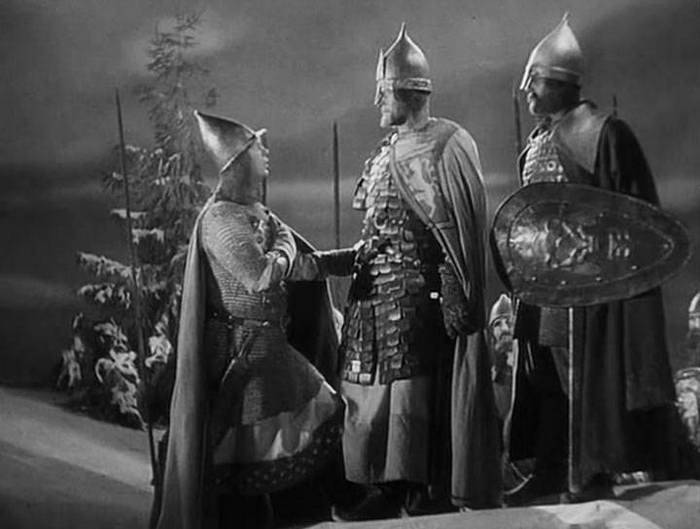
The figure turned out monumental
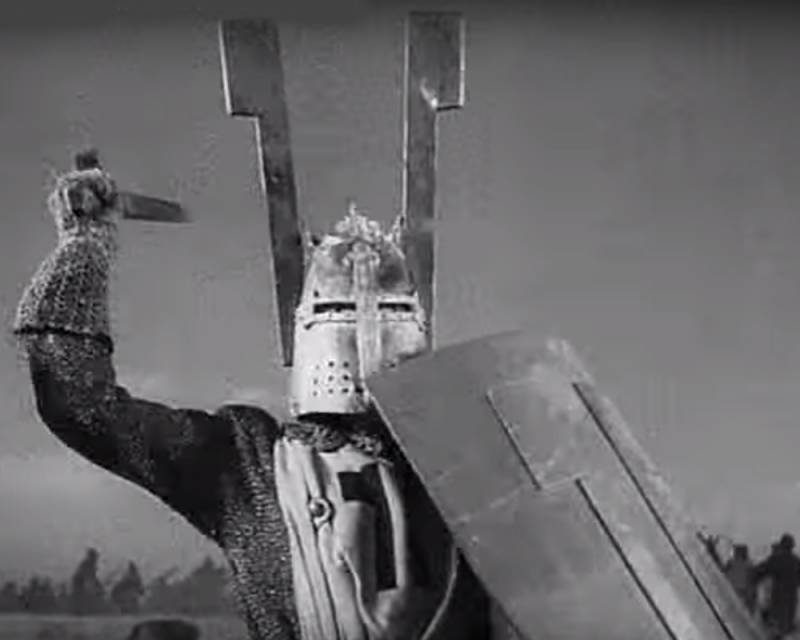
Some western knights are also quite realistic. For example, this knight was clearly copied from a miniature from the Codex of Manes. Tungsten von Eschenbach
Here is Pavel Korin, whose triptych, dedicated to Alexander Nevsky, we will consider today, was born in the same place - in Palekh. And first he studied painting at home, then at the Palekh icon-painting school, after which he was accepted as a student in the Moscow icon-painting chamber of the Donskoy Monastery, where Nesterov was also among his teachers. And he was a good teacher, because then Korin wrote about him: "You threw your flame into my soul, you are the culprit of the fact that I became an artist."
Then Nesterov insisted that Korin enter the School of Painting, Sculpture and Architecture, which he graduated in 1912, become a real certified painter, and meet with the Grand Duchess Elizabeth Fedorovna, at whose insistence he went to Yaroslavl and Rostov to study the frescoes of ancient Russian churches. And this princess was the sister of the empress, and her husband the terrorist Kalyaev killed right in the Kremlin. And then she founded the Martha-Mariinsky monastery, Mikhail Nesterov and Pavel Korin were to paint her temple.
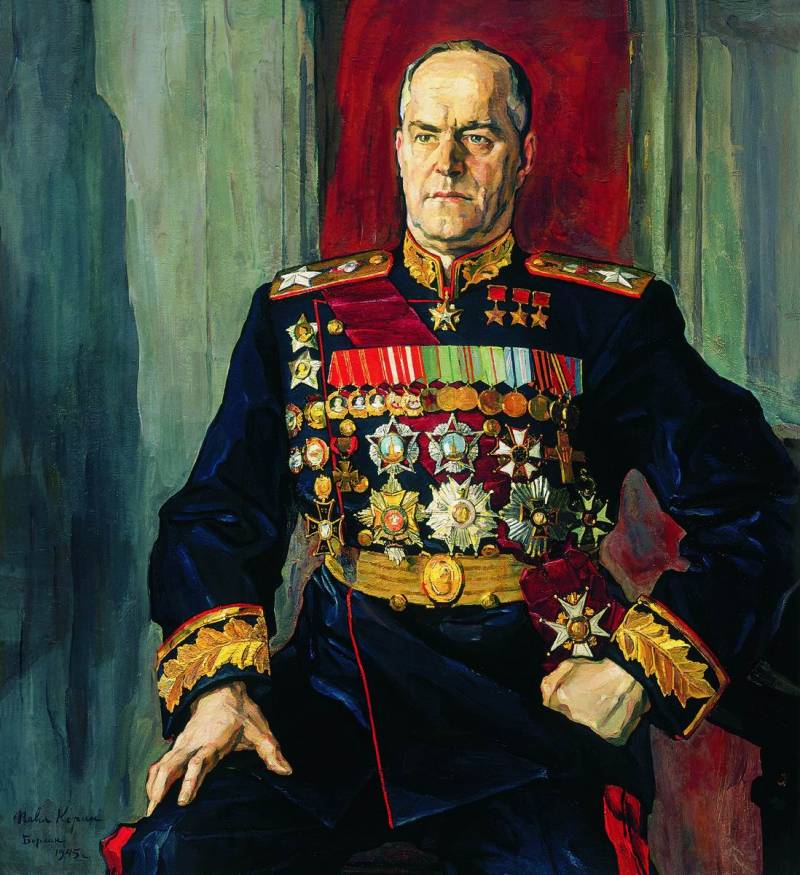
And this is Marshal Zhukov, of course. But take a closer look: on all the canvases of the artist, the skulls of his characters are elongated in iconography. Or is it just that way?
Why is there such a detailed story about the biography of this artist? Perhaps, immediately proceed to the consideration of the triptych, perhaps one of the readers of VO will ask. The answer will be this: because it is in this case that it just matters. Because this was the formation of his worldview, and it is the key to understanding the paintings of so many artists.
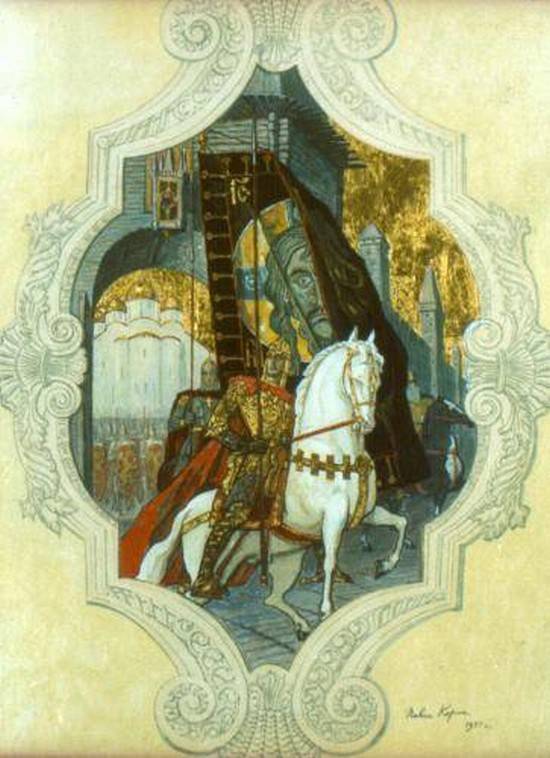
Plafond of the Komsomolsk station. Also the work of P. Korin, familiar to millions
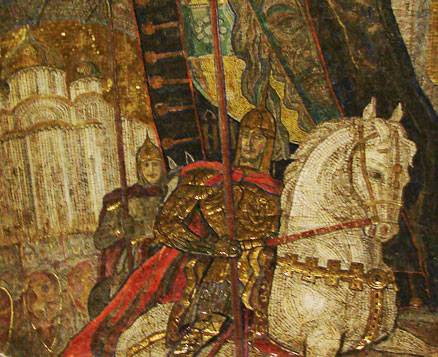
Alexander Nevsky from the mosaic panel of the Komsomolskaya station, close-up
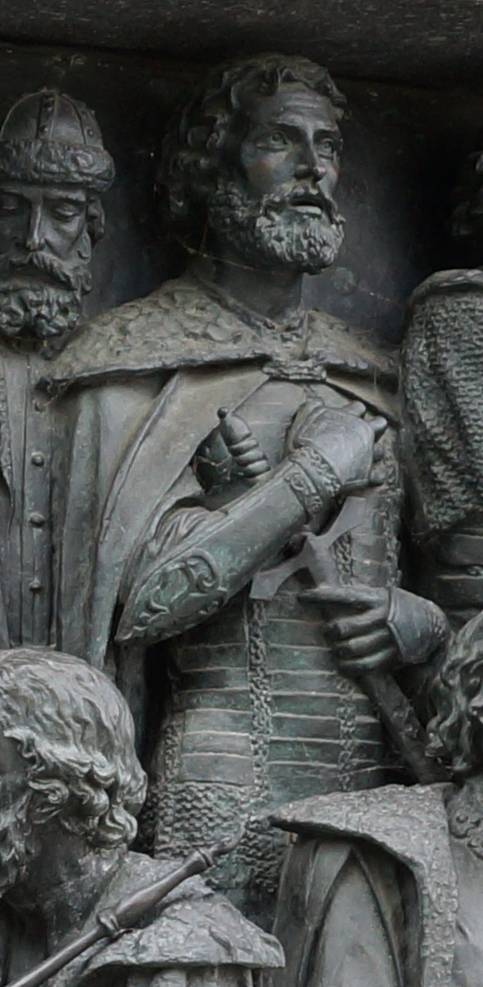
Alexander Nevsky at the monument "Millennium of Russia." Moreover, it’s a bakhterets of the XNUMXth century
And then Korin began to live and work in Moscow, where in February 1917 he settled in the attic of house 23 on Arbat and lived there until 1934 - almost 17 years. He admitted: "Peeling the skin, I got out of the icon painting." And got out! He made a mosaic frieze for the Palace of Soviets “March to the Future”, mosaic panels of his work adorn the underground stations of the Moscow metro Komsomolskaya-Koltsevaya and Novoslobodskaya. On the instructions of the Bolshevik party and government, he painted portraits of the writer A.N. Tolstoy, artists Kukryniksy, artist V.I. Kachalov, proletarian writer Maxim Gorky, victory marshal Zhukov and many other famous figures of the USSR. And at the same time, it is known that all this time he remained a believer. He collected icons, but most importantly, he dreamed of writing a huge painting “Requiem”, inconceivable in the country of socialist realism, because there (and this is known from preserved sketches) he wanted to depict all the highest hierarchs of the Russian Orthodox Church in the Assumption Cathedral of the Kremlin , and he pulled a gigantic canvas on a stretcher and for thirty years never made a single brushstroke on it, although he drew sketches. Soviet power was kindly. He became a laureate of the Lenin Prize, but ... most likely, he did not think anything good about this very government. Although on the other hand, after 17, he did not go abroad. And the reasons he had for this were serious. After all, it was his teacher, Mikhail Nesterov, who was arrested in 1938 on charges of espionage. His son-in-law, a prominent lawyer and professor at Moscow University, Viktor Schreter, was also accused of espionage and, of course, shot, and the artist’s daughter, Olga Mikhailovna, was sent to a camp in Dzhambul, from where she returned on crutches with an invalid. It is unlikely that he was happy with the “good work” of the Soviet security agencies. But he continued to write anyway. And then he too ... was accused of espionage in favor of either Poland or Japan.
The famous triptych, in the center of which Alexander Nevsky is depicted, is a thing full of secrets even to a greater extent than Rembrandt’s painting “Night Watch”, which we examined here. However, judge for yourself. In the triptych, therefore, it is also a triptych, that is, something reminiscent of a church fold (!), There are three paintings. And each of them has its own name. And your plot. Here is the left part - “The Old Tale”, where we see a bent old woman and two strange men against the backdrop of a giant image of Nikolai Ugodnik. One of the old ones with the oslop - the butt of the club with nails, and the young rolling up sleeve, with a pistol and obviously non-Russian appearance. We read what the art historian writes about him: "the picture" suggests the rich history and culture of the Russian people. " Isn’t it nonsense? What kind of culture, when you see that the main thing in this canvas is the image of the saint, and the abundance of crosses on his vestments. He, the saint, stands behind all these people, because of that they look so ... obviously pleased. The grandmother clearly smiles (this is during a disaster), the bearded one also ... his mouth is pinched, and the young man looks “on my mind” - “I won’t miss my own.” But in the hands of the saint is a sword and some strange temple of God. If this is the history of the Russian people, then it is all imbued with the spirit of Orthodoxy, and ... somehow it got away with it, to see the time in the country was such that ... the authorities looked at such “pranks” through fingers, only painting raised people against the enemy .
The right side, the Northern Ballad, is also somehow strange. Some vague and non-Soviet ideas are embedded in it. Well, a sword ... A sword, which the Russian soldiers never had, and it’s hard to understand who it belonged to. Although the handle is drawn well, correctly, and stupid ricaso. But ... well, with all these realistic details of the swords, there weren’t such proportions. This is what matters. And again - epic, fairy tale this picture adds. But ideology is not. By the way, he has knightly armor on his feet ... He, in general, who is this man with a gold ring on his finger? And it is not for nothing that we never liked to talk about these parts of the triptych.
But the central part of the triptych was liked by our art critics. And this is what they write about her. An official, so to speak: “While working on a triptych, the artist consulted with historians, employees of the Historical Museum, where he painted chain mail, armor, helmet - all the equipment of the protagonist, the image of which he recreated on the canvas in just three weeks.” And if all this is actually so, it would be better if he did not consult with them and did not go to the museum. Because in terms of epicness, again, everything is in order with this canvas, but historicity in it, well, right, except that it’s just a penny.
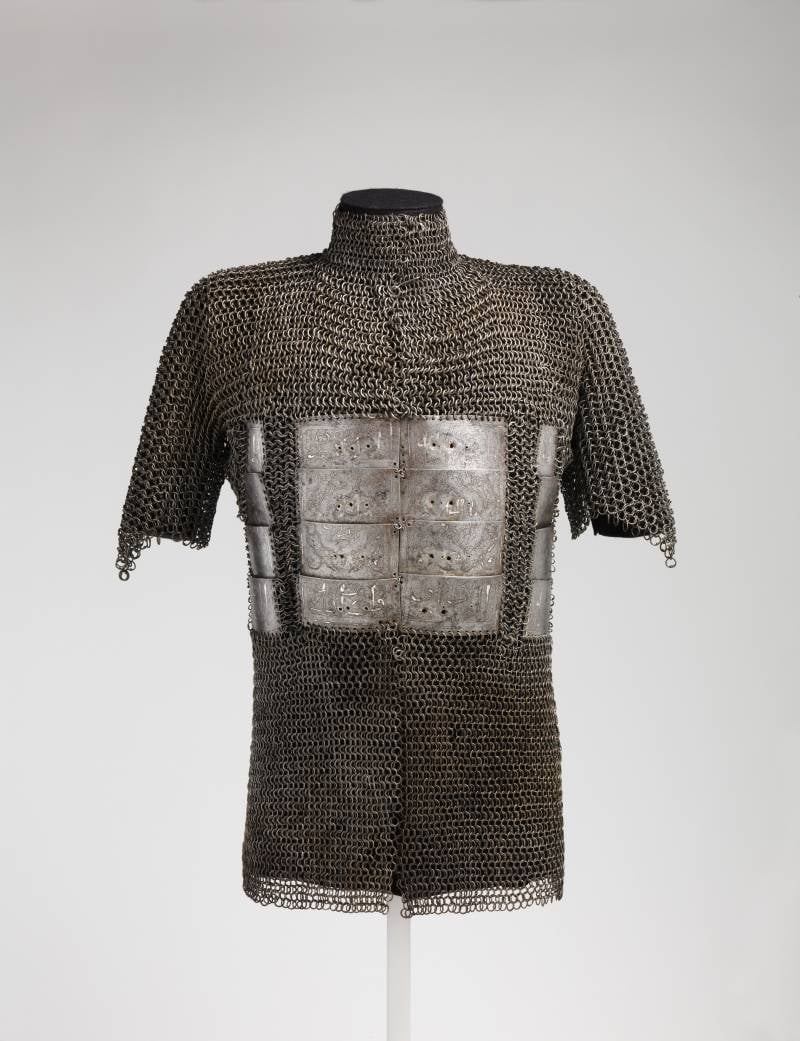
Here is the armor that Corinthian Alexander wears. This is Yushman of the late XV - XVI century, possibly Turkish, Istanbul. Length 81,3 cm, weight 10,07 kg (Metropolitan Museum of Art, New York)
Moreover, without a doubt, the picture is icon-painted, epic and severe. From the point of view of historicity, it does not withstand any criticism and could only cause laughter both in the Vasnetsov brothers and in Surikov. The fact is that Alexander Nevsky dressed as an artist in strange and simply unthinkable for a Russian warrior of the XIII century, forged armor, armor, which at that time simply did not know in Russia. True, the prince’s head is covered with a gilded helmet, very similar to the helmet of his father, Prince Yaroslav, which he lost at the Battle of Lipitsa in 1216, was found by a peasant in a hazel bush and has survived to this day. However, the helmet in the picture to Alexander is clearly small and hardly comfortable for him. Just compare the commander’s face and the helmet sitting on his head ...
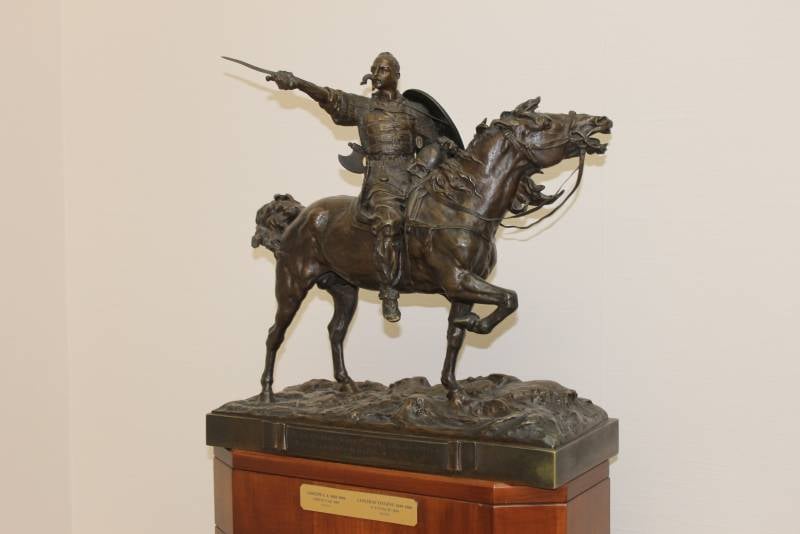
Another “historical work” is the sculpture of Svyatoslav by E.E. Lansere. Well, where did he get such armor from? And on the other hand, the Byzantine warrior hit him with a spear in the humerus, but could not put to death. And this means that it was not chain mail, but plate armor!
The very image of the prince is very controversial. In the year of the Battle of the Ice, he was only 21 years old. It also depicts a mature husband, who is clearly "many summers." That is, it is clear that the artist wanted to show a wise, experienced, confident person, but ... could not express it in the face of a 21-year-old man, or did not want to. After all, no one knew what Alexander really looked like. In 1942, when he drew it in three weeks, everyone saw only the movie “Battle of the Ice”, where Cherkasov played it. By the way, on the order of Alexander Nevsky it is he who is depicted in profile. And, apparently, Korin wanted to get away from the well-known "Cherkasy" image, moreover in facial features, and especially in clothing. And he did leave ... but ... he went very far. But he painted another image behind the prince - the image of the Savior Not Made by Hands. And again, how and why? After all, the “godless five-year-olds” just went on (they were called so) the image of the saints was not welcomed ... And here ... True, the saint has only one eye, but he looks so piercingly that he alone is enough to remember that without divine providence you won’t even kill fleas, and "who is against us if God is with us ?!"
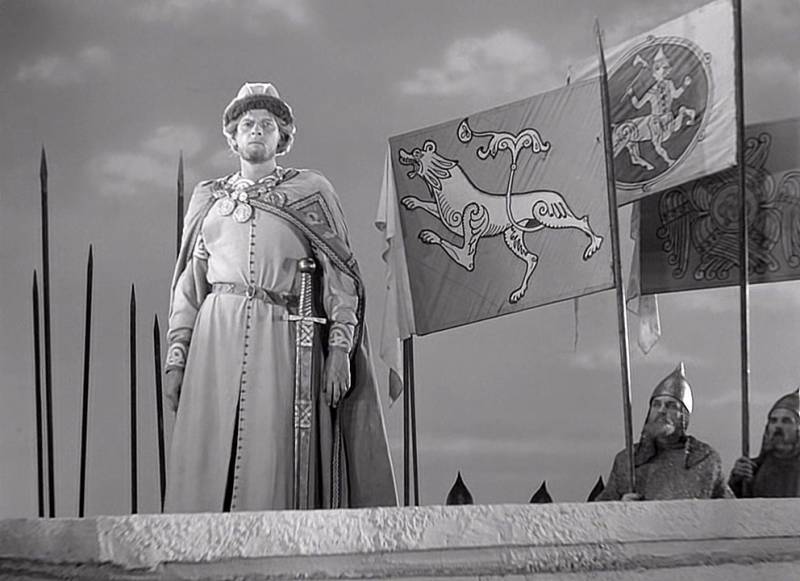
Shot from the film "Alexander Nevsky." Look at the banners. No faces of saints. And Alexander himself didn’t mention God for the whole film, nor did he cross his forehead. So it was then ...
It is clear that the artist faced a very difficult task. It was necessary to depict Alexander so that he also did not resemble his cinematic double in clothes, and this was difficult. Eisenstein tried to show him in vestments not inferior to the knight's, although the plates of his scaly shell look like leather, not metal. And what was he to do? Put chain mail on him? After that, everyone would say that Alexander at Eisenstein looks richer ... to take the scaly shell, and to gilt, as he did on the mosaic panel in the subway? Yes, that would be a good decision if it were not for the image of the Savior over him, which is also “golden”. "Gold" in the center and "gold" on the right - does not look. So he, apparently, decided to dress him in a completely non-historical Yushman.
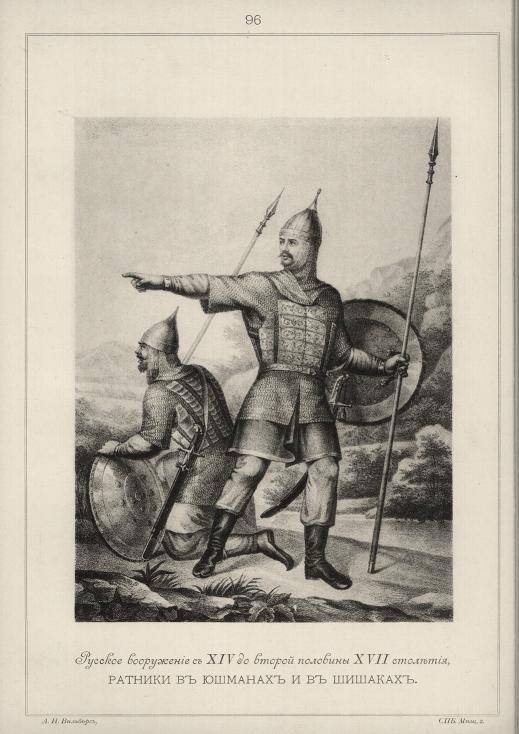
A picture of warriors in Yushmans from A.V. Whiskey
What about the legs? What about the legs? After all, they have typical plate greaves and knee pads, which were not peculiar to our soldiers. U A.V. Our warriors are depicted in chain mail pants, although they have not been found by archaeologists. And here again the problem. Eisenstein’s legs are covered by the prince’s long-laced old Russian clothing. But Yushman was short. Draw the prince in pants and morocco boots? Beautiful, but ... not severe! So he clothed them in bluish steel.
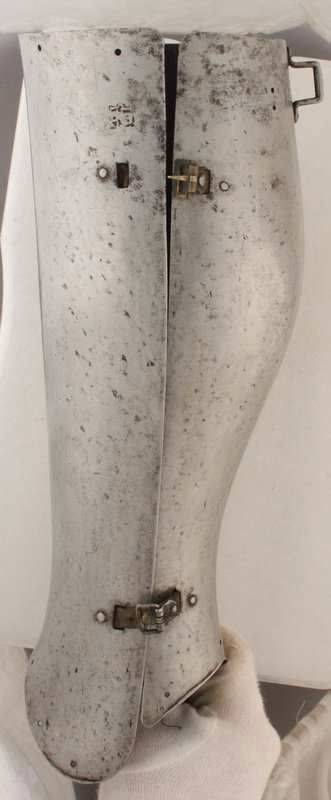
This is what the artist portrayed on the prince's feet! Relate to the year 1400. Made in Italy. Kelvingra Art Gallery, Glasgow)
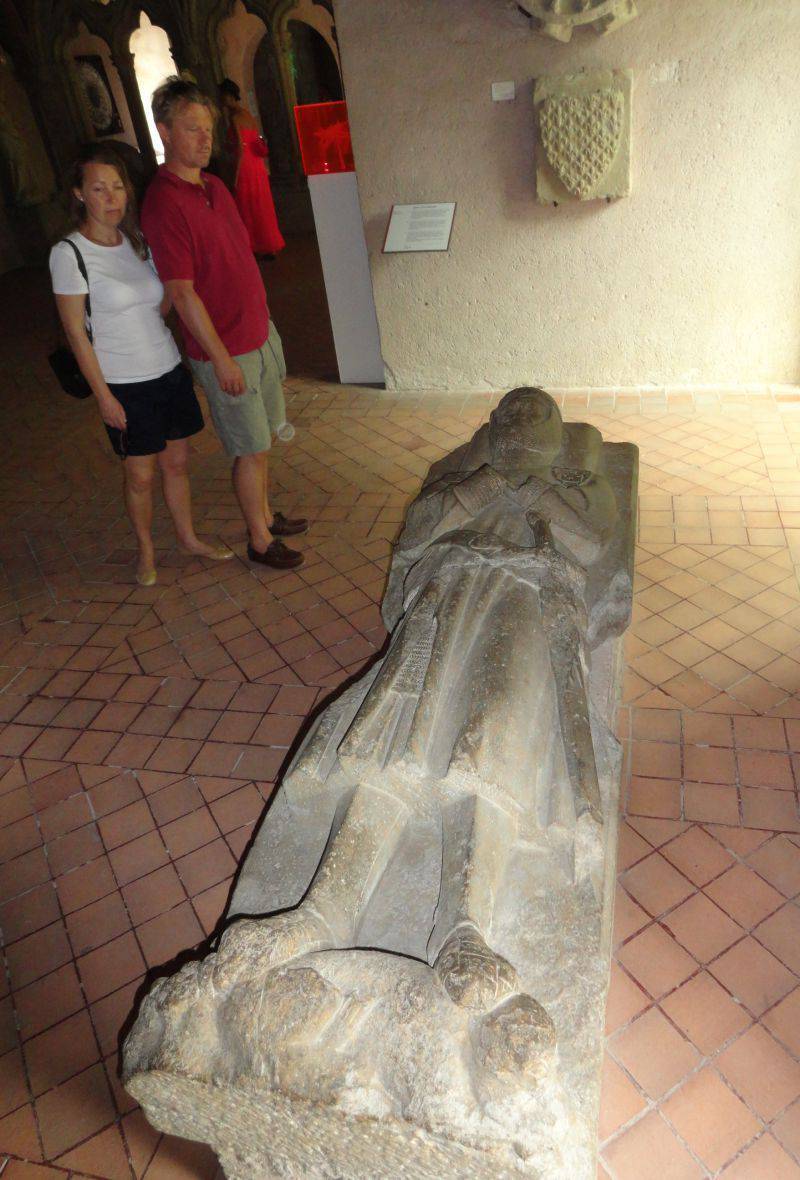
Effigia from the castle of Carcassonne. Well visible loops of leggings and good shoes - plates riveted to some basis. It is possible that this is metal or thick leather, but the rivets themselves in any case should have been metal. It is believed that this effigy belongs to the era of the Albigensian wars of 1209-1229, although it is more likely to end than the beginning. That is, the Spanish knights already had such armor. But the effigies of the German knights do not show us anything
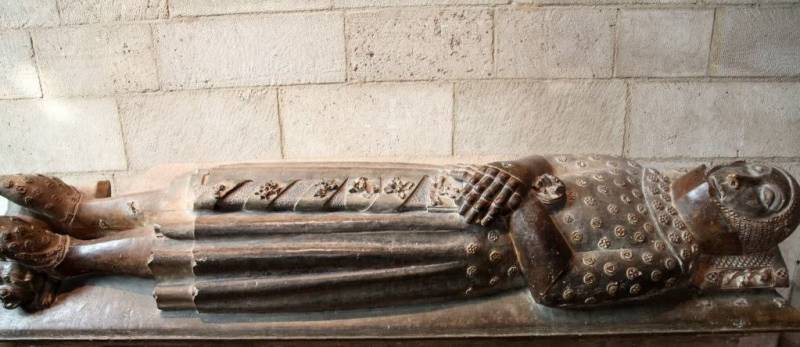
And there are many such effigies in Spain! Effigia don Alvaro de Cabrera the Younger of the Church of Santa Maria de Belpuy de las Avellanas, Lleida, Catalonia, 1299 (Metropolitan Museum of Art, New York)
The sword should be said separately. The sword belt on it is quite consistent with that time and, most likely, Corin took it from the books of Viollet le Duc. But here’s the crosshair ... The fact is that its “horns” are turned inward, although they usually always bent outward or were straight. But ... "out" it is purely visual, always somehow aggressive. And the prince of Korin is a defender, not an aggressor, so he bent them to himself, that is, to the hilt, and not to the tip of the blade. The decision is psychologically correct, although again it doesn’t even smell historicism here.
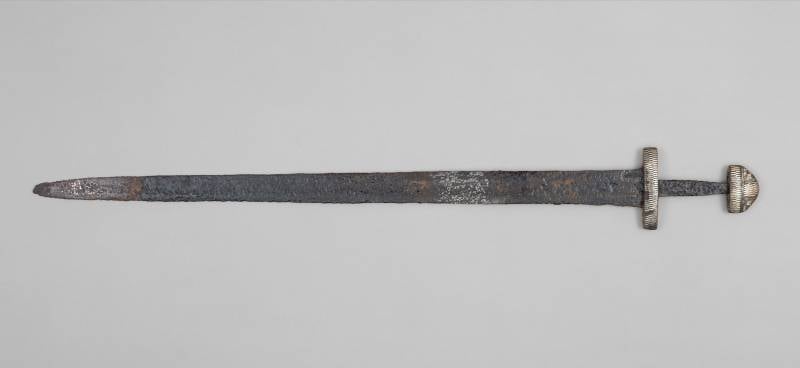
Sword of the X century from the Metropolitan Museum of Art in New York. Length 95.9 cm. Blade length 81 cm. Weight 1021 g.
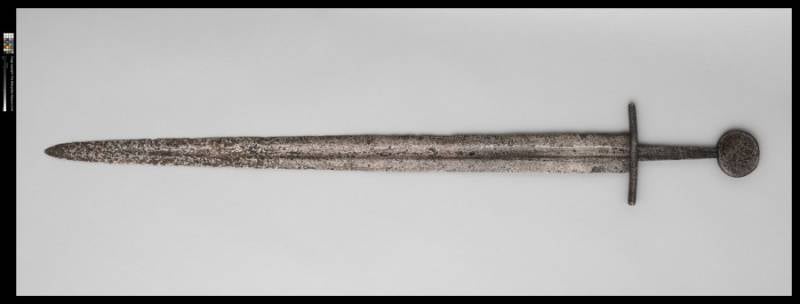
The sword closest to the era reflected in the picture. France, XIII century. Total length 91.8 cm, blade length 75.6 cm, cross width 13.0 cm. Weight 850 g. (Metropolitan Museum of Art, New York)
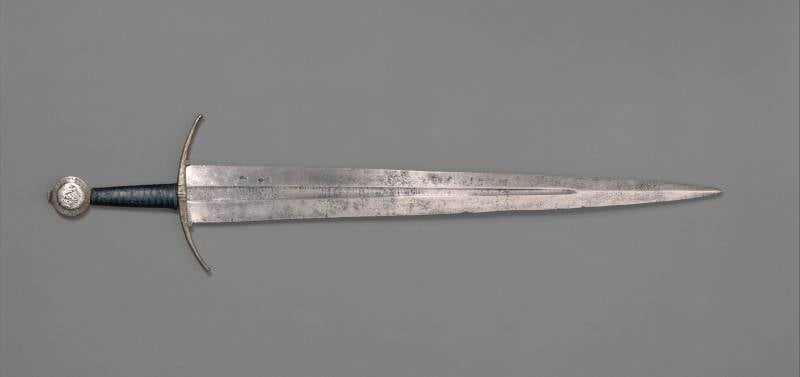
Sword 1400 g. Length 102.2 cm. Blade length 81.3 cm. Weight 1673 g. (Metropolitan Museum of Art, New York)
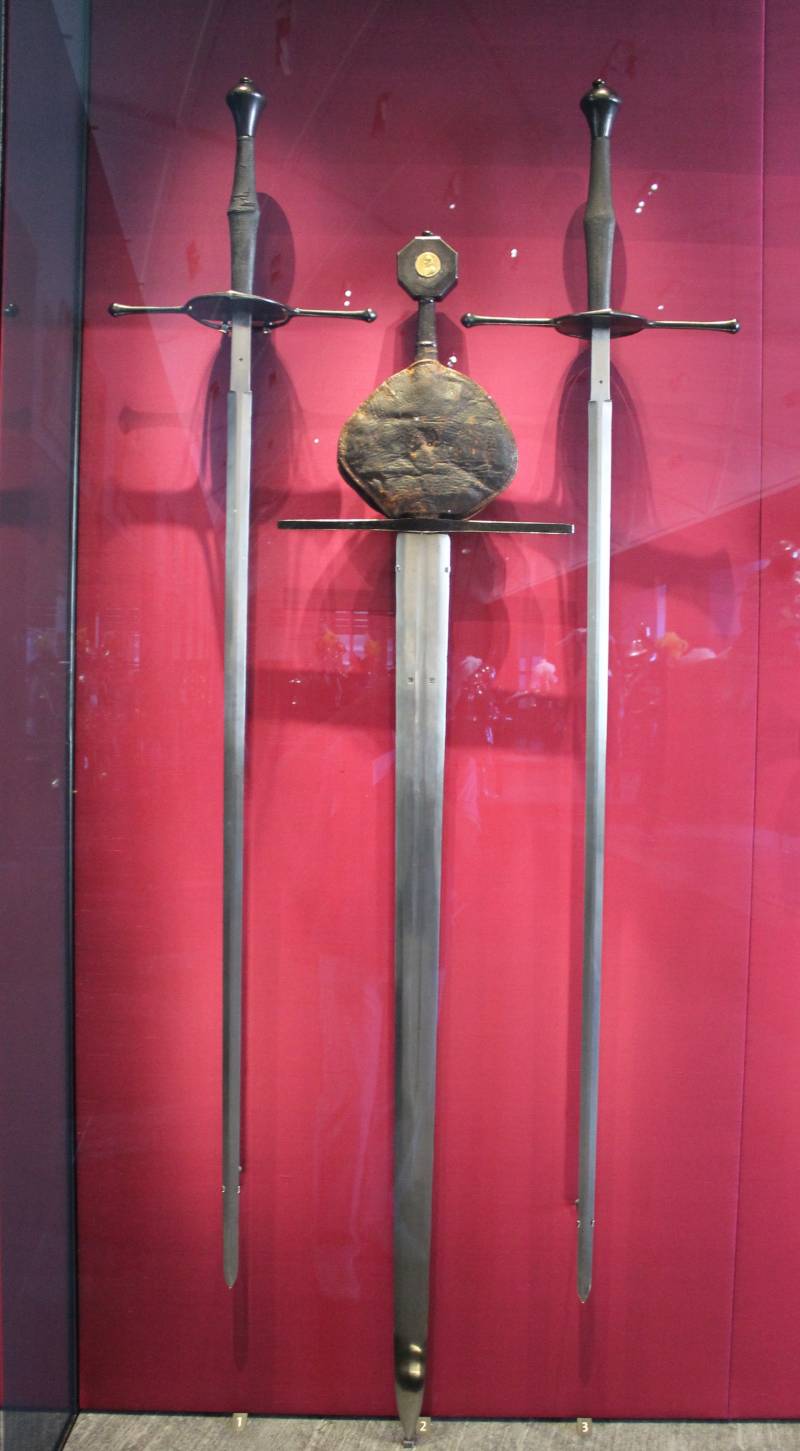
And this is how the real two-handed swords of the Landsknechts of the XNUMXth century looked like. (Dresden armory Ward)
Well, as a result, we can say that the time was dramatic, the time was contradictory, which means that the art was the same, it simply could not be otherwise!
By the way, the work of Korin, which saw the light in 1943, just when the Soviet government went to reconciliation with the church, the priests were returned from the camps, the parishes in the churches, which had recently been the warehouses of the MTS and the granaries, were opened, ripened very on time and therefore was received with a bang ! A person fell into the trend, so to speak, and this also became the reason for his success. And the question is: what could his prince be in another image, historically more reliable? But who can say it today! The mystery of his images left with the artist ...
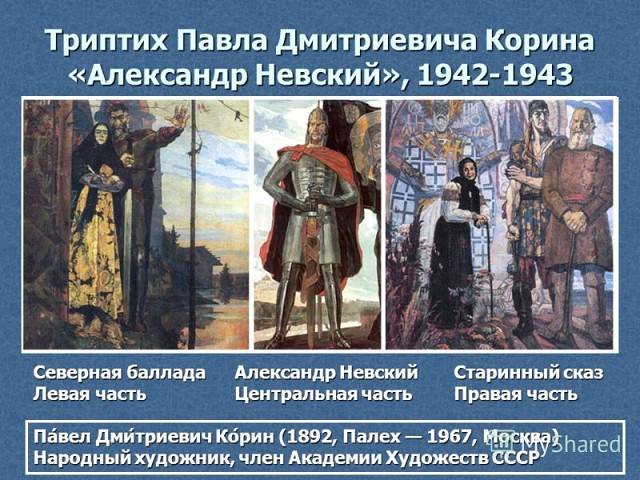
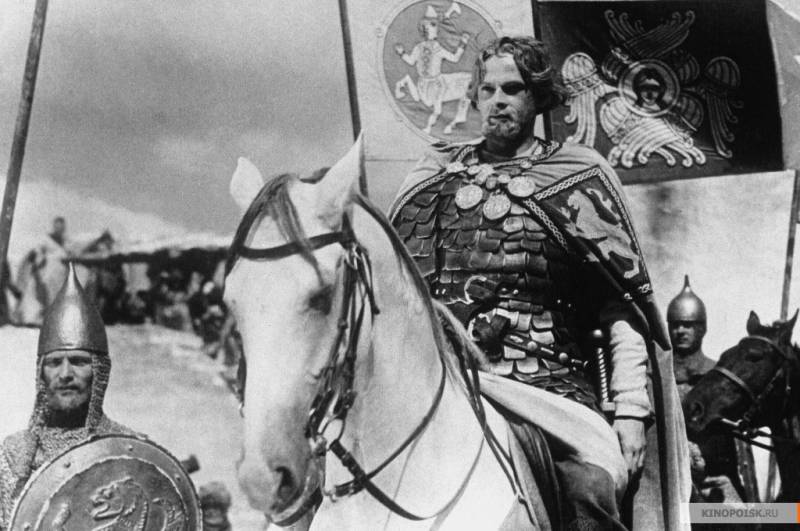
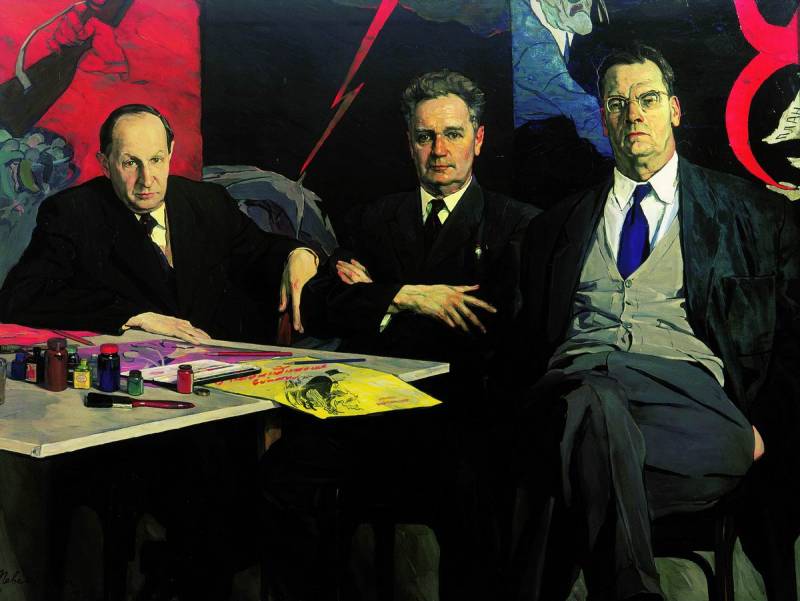
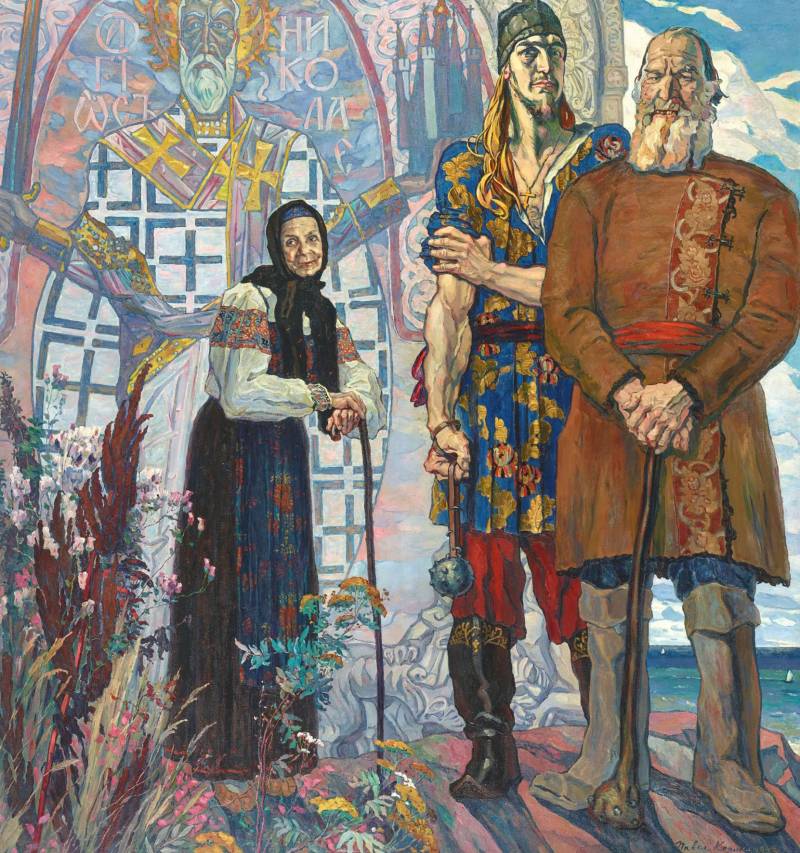
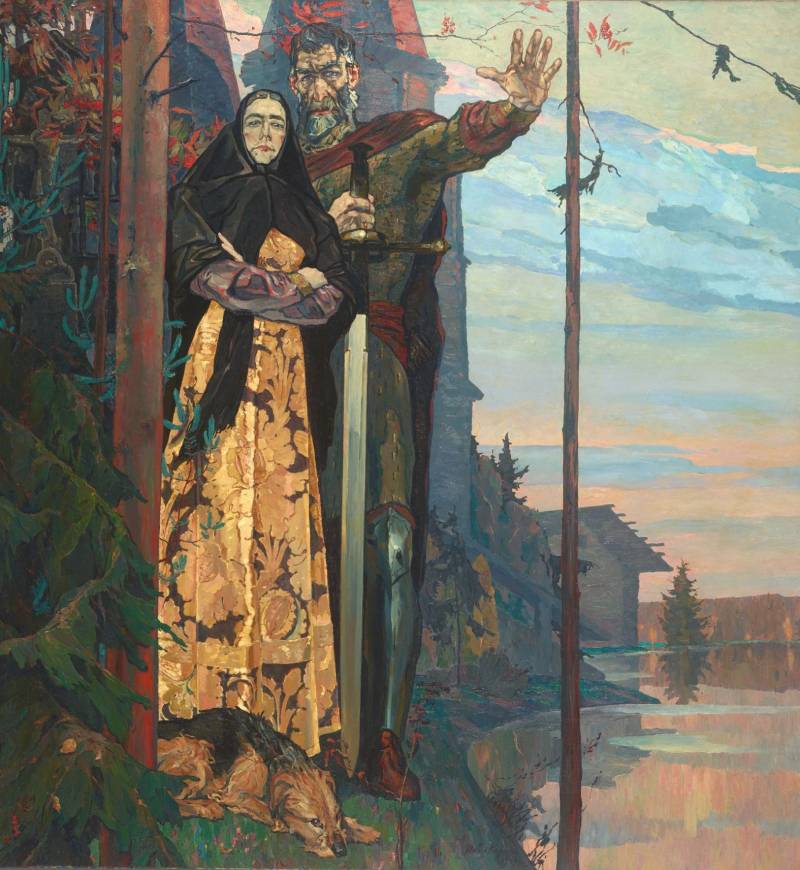
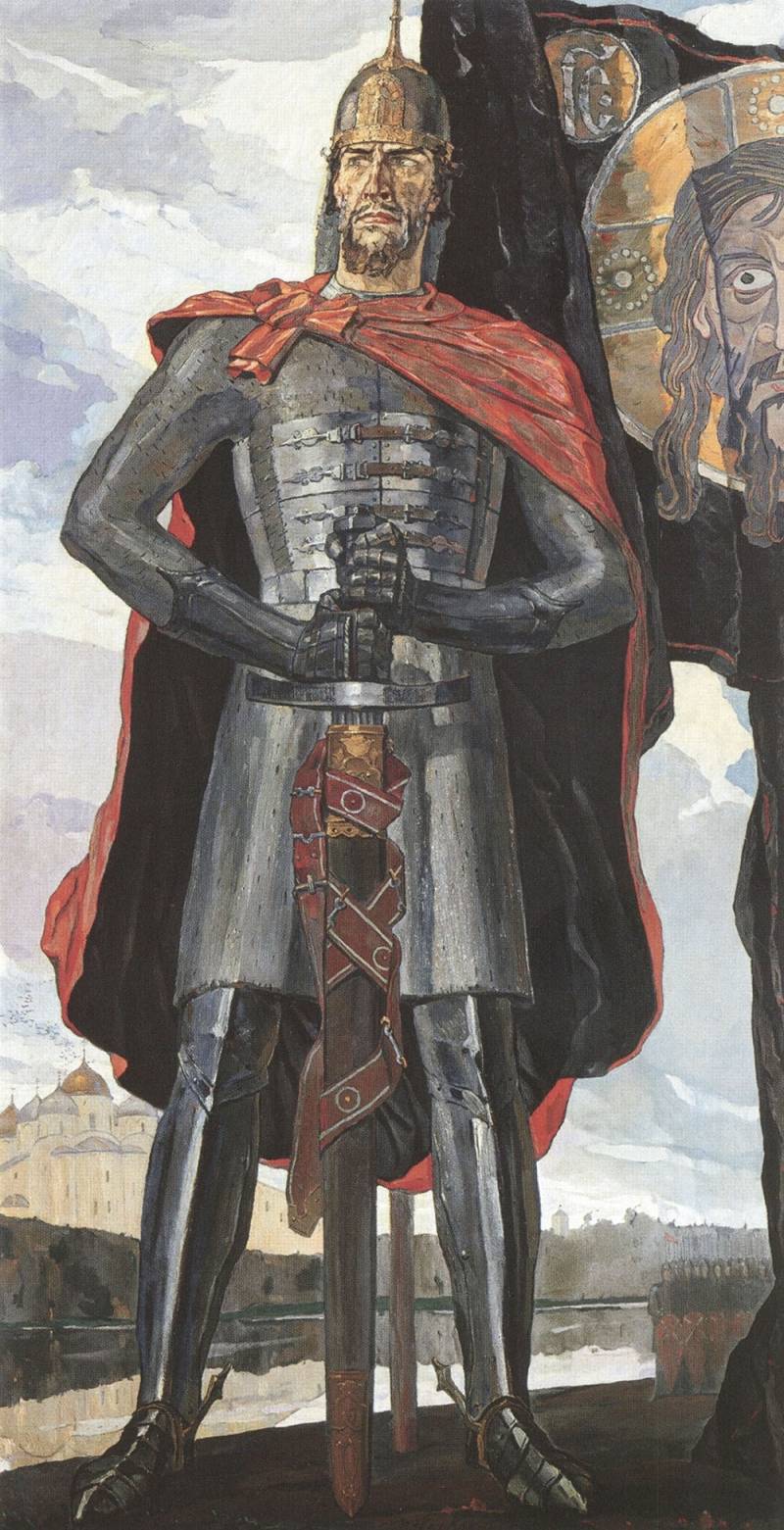
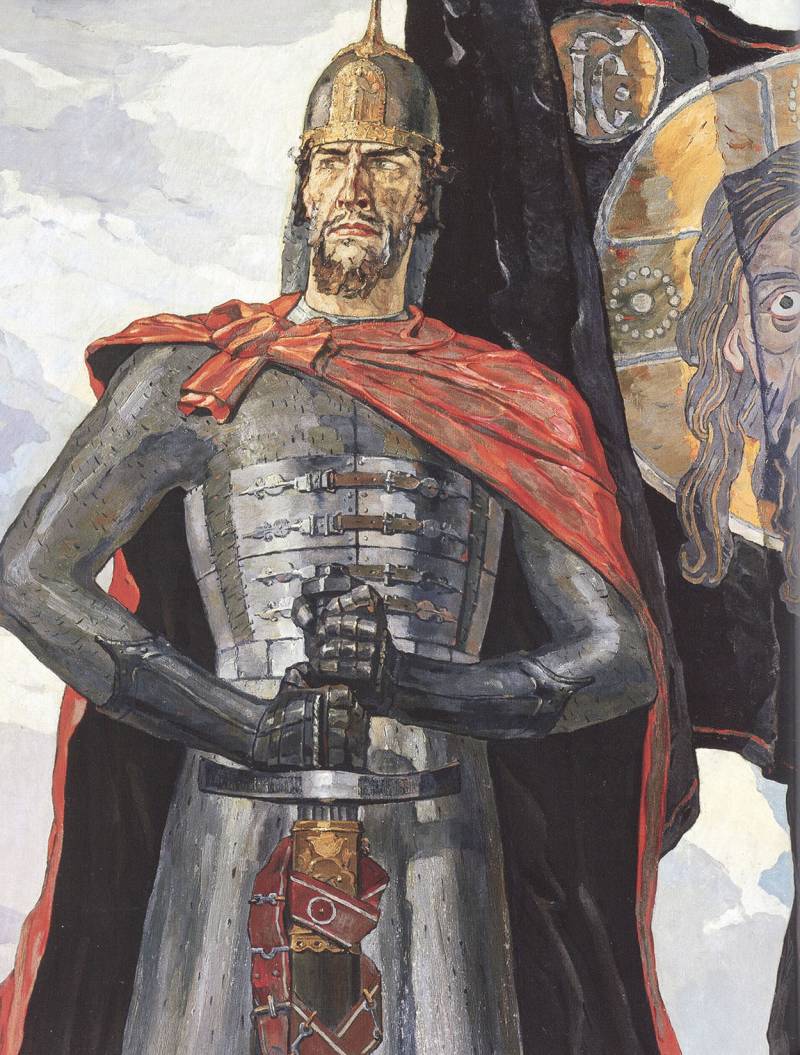
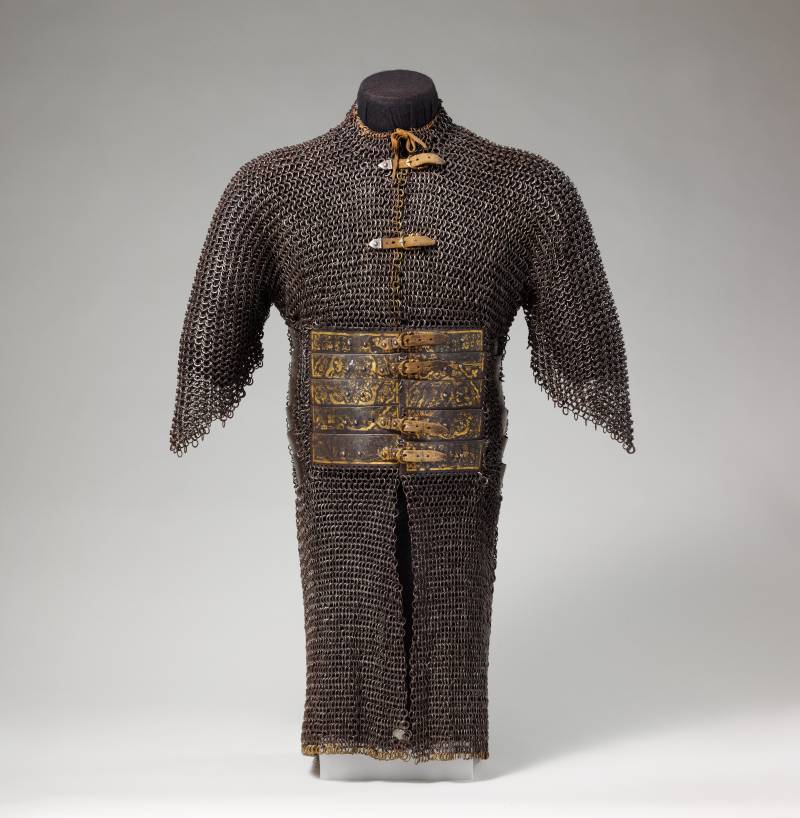
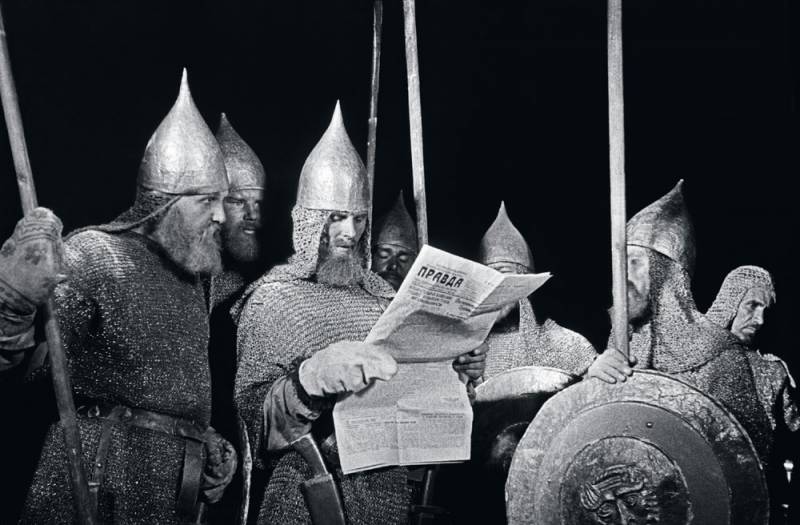
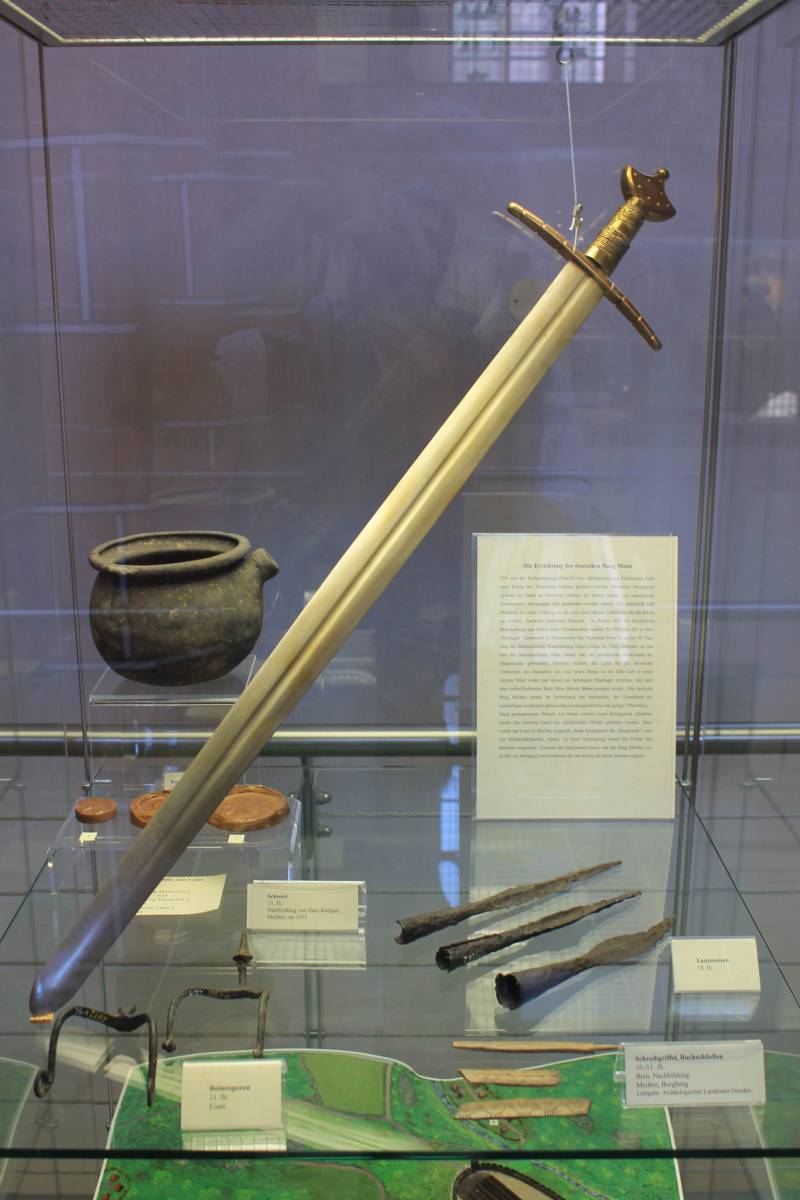
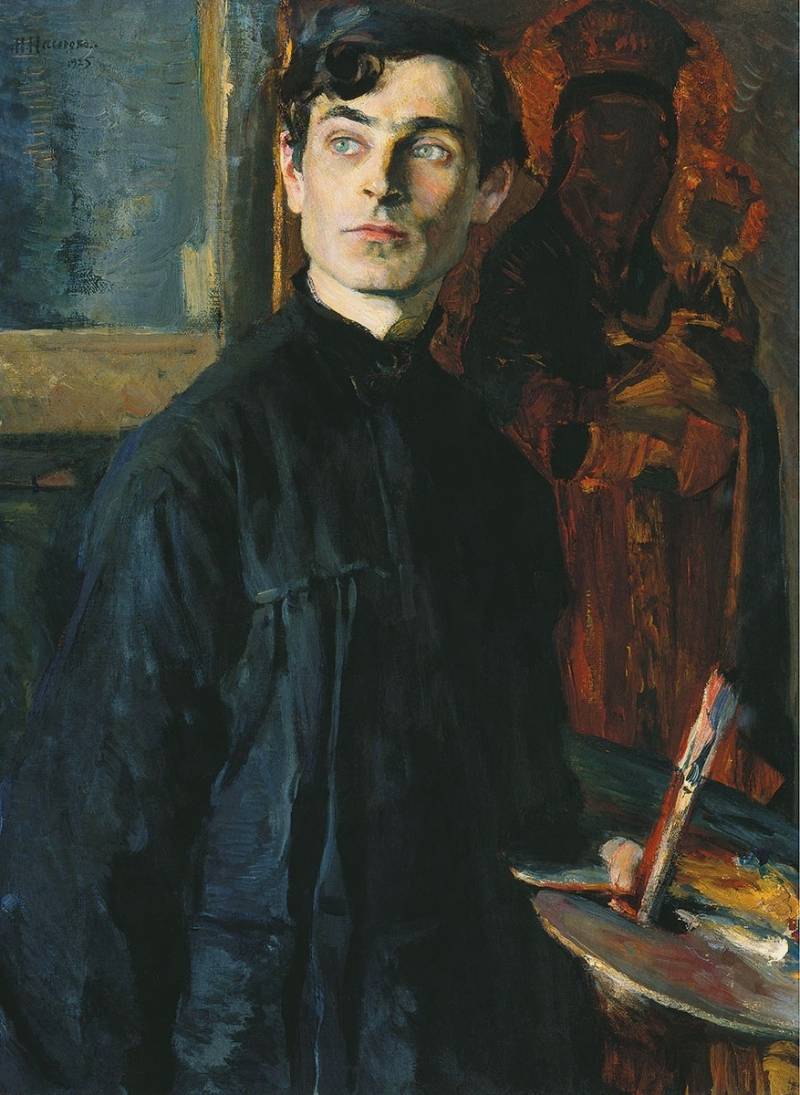
Information